Picture a Victorian village from the nineteenth century under the scorching Spanish sun, amidst a breathtaking, multi-coloured lunar landscape through which the world’s only red river meanders … Welcome to the region around Riotinto in the Andalucian province of Huelva.
Long before our era, the soil here was searched for silver, iron, copper and gold. However, nowadays the scientists search deep underground for evidence that life is possible without oxygen and sunlight.
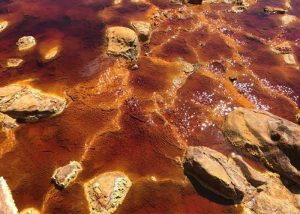
All the scenic splendor would not have existed here if human hands had not been involved. As a result, this area is unique. Also, thanks to the rich soil, the river water and everything it touches, it takes on the most wonderful colours. The local mining history, which goes back more than five thousand years, gave the landscape an extra surreal touch.
Purple, rusty brown, blood red, purple, blue-grey, light green, brown, orange and yellow compete for space on vertical excavations in which geological layers are still clearly visible.
British mining company
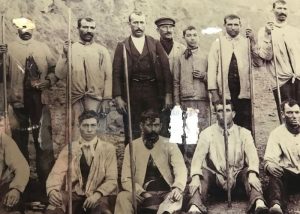
Iberians and Phoenicians already dug in this area for silver, iron and copper. The extraction took off with the arrival of the Romans. However, when the Roman Empire fell, so did the intense digging. Until on February 18, 1873, representatives of an English company visited the rural area and finally disrupted the peace. Thereafter, a very lucrative period of around 80 years started for Riotinto Mining Company Limited.
The English brought their knowledge from the then powerful and prosperous Great Britain, thanks to the many colonies, to Spain. The valuable minerals quickly found their way to England via a new railway line to the port of Huelva. Furthermore, a Victorian-style neighbourhood was built for the senior engineers and their families. They did not feel at home among the Andalusians and missed their football, golf, tennis and polo. Activities that did not exist at all in then Spain.
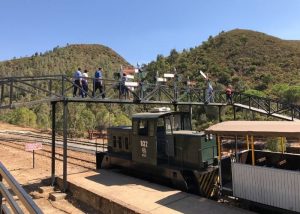
Now the entire legacy of mining history, including the Victorian neighbourhood of Bella Vista, belongs to the Fundación Riotinto. This Foundation ensures the preservation of this cultural-historical heritage. Successfully so, because a day at Minas de Riotinto is an absolute must. You can visit the museum, the English Quarter, admire the mines themselves and take a ride on the train.
Suffering Roman miners
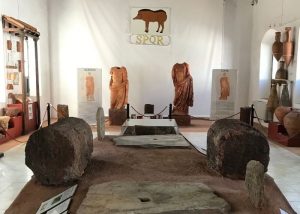
The Mining Museum is located in what was once the first “modern” style hospital in Spain. It was built by the British. There are fourteen halls, a fully reconstructed 250 meter Roman mine and original locomotives from the Riotinto Mining Company Limited. There is even a beautiful train carriage in which Queen Victoria was transported to India to visit the Maharaja. The wagon was eventually given to King Alfonso XIII of Spain.
The realistic replica of a Roman mine makes it painfully clear what the miners´conditions – mostly slaves – were like. Once you entered the mine, you would never see daylight again. Handcuffed to short chains, their remaining four years maximum of life consisted of gruelling work under degrading conditions. The museum also offers a wealth of information. There are many details on the geological features of the area and models of the history of Minas de Riotinto. Also, the mines were moved several times to allow for new excavations.
The mines, NASA and Mars
Peña del Hierro is an open-air mine where the Romans once looked for copper and iron in particular. The mine, closed in 1972, and now serves as a work area for scientists attempting to demonstrate that life is possible without oxygen or light. The soil around the Rio Tinto has many of the same characteristics as that of Mars. In 2005, NASA collaborated with the Spanish CAB (Centro de Astrobiology), with regard to the development of a Mars robot.
Open air mine
Via an original 155 metre long mine you reach an astonishing panorama with a view of the 84 metre high open air mine. It is a kind of crater with a diameter of 330 metres at the top and 190 metres at the bottom. Despite a swimming ban, the rust-coloured water that fills the crater below seems to be very good for various skin conditions. This is due to its low acidity and high zinc, copper, and iron content. All of the bizarre colours together in utter silence offers an unreal sight.
Outside the tunnel on the hill you can admire an old wooden, recently completely restored Roman elevator shaft. With grants from the European Union and the Andalusian authorities, all mines in the region are being refurbished by the foundation and made accessible to visitors.
Ride with steam train
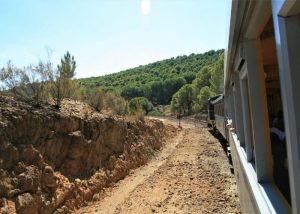
An antique train leaves from a station just outside Minas de Riotinto. It travels 8 kilometres along the Rio Tinto River. This is done on the same track that was used by the English in the late nineteenth century to transport the minerals to Huelva. The wagons are original and the 1875 steam locomotive is the oldest still in operation in Spain. The ride past the ruins of transfer points, rusty locomotives, old wagons and several multi-coloured quarries is beautiful.
Along the way we constantly have a different beautiful view of the Rio Tinto in all its shades. This river is the only naturally polluted river in the world. Also, the landscape is probably one of the few in the world that has been enhanced by industrial activities. After half an hour, there will be a break at the end of the route. Passengers take a short walk to the riverbank to get a closer look at the weirdly coloured water and to buy some refreshments.
The English Quarter
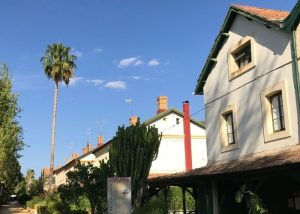
The once very chic English residential area of Bella Vista, built entirely in Victorian style, seems a bit out of place in this setting. The first general manager of the English company, Charles Prebble, did not feel very much at home among the Andalucians and decided to build a neighbourhood for his family and for the other English staff. Villa number 21 is open to the public in its original state.
Step over the threshold and you are immediately transported back in time. Everything is exactly as it was then with as many original objects as possible. Only here and there is history clarified with replicas. Even the bookcase is full of original, yellowed books from around 1900. Tables are set with antique Chinese porcelain that is at least 100 years old and the walls hang equally old photographs. A photo of a miner’s family stands out because of the very unhappy and partly angry-looking people.
The contrast between the different lives lived in this area could hardly be greater. One of the Victorian houses is now a casa rural. You can spend the night in one of four different themed rooms for prices from €100 for 2 people.
Shielded life
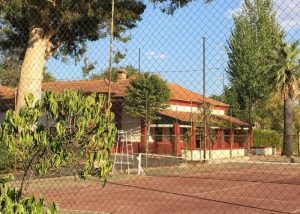
In two exhibition rooms there is more information about how the English tried to continue their own lives far from home. All houses in the fully walled English quarter are oriented towards the centre of the neighbourhood that was formed by the social club with swimming pool and tennis court.
Spaniards were only allowed access if they delivered groceries or worked as a cook, cleaner or gardener. In a chapel which unfortunately is not open to visitors due to it being privately owned, their own faith was professed. Also, elsewhere in the district is a completely overgrown, but beautiful, cemetery intended only for employees of the Mining Company. Through a hole in the fence and crawling through dense vegetation, you can admire some, very neglected graves, whose headstones provide information in English about the deceased.
The Parque Minero de Riotinto re-opens on the 20th of March 2021


